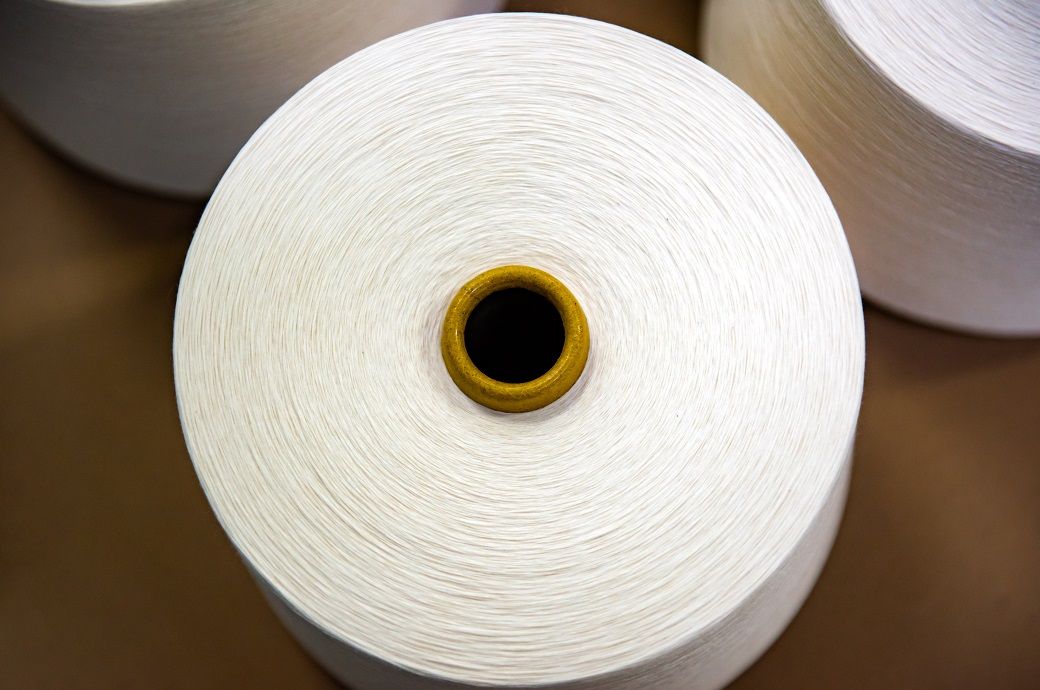Fashion
KaDeWe: New general manager appointed, joining from PVH

Published
November 6, 2025
KaDeWe has a new head: Sandra Swiderski has recently taken up the position of general manager of the Berlin luxury department store. The 42-year-old succeeds Oliver Kramny, who stepped down as head of KaDeWe for health reasons.
Sandra Swiderski reports to Norman-Henner Plattner, director, stores. With around 18 years’ experience in international fashion retail, she brings extensive leadership expertise and deep market insight, according to the department store.
From 2014 to 2019, Swiderski served as general manager, sales at Peek & Cloppenburg Düsseldorf, overseeing sales across several stores, including the flagship locations in Berlin (Tauentzienstraße) and Vienna (Kärntner Straße). She subsequently led the development and implementation of international business strategies as country manager retail.
Most recently, she was responsible for process and performance optimisation as retail area manager DACH at PVH Brands Austria.
This article is an automatic translation.
Click here to read the original article.
Copyright © 2025 FashionNetwork.com All rights reserved.
Fashion
Does December’s rise in UK GfK’s consumer confidence report conceal tougher expectations for 2026?

Published
December 21, 2025
The latest consumer confidence report from GfK didn’t share the gloom of the one a day earlier from the British Retail Consortium (BRC), but it did reflect its note of caution for the year ahead.
GfK’s long-running Consumer Confidence Index in fact showed confidence is up two points (to -17) in December and all five of its measures edged up this month. But confidence still “remains subdued after a year of no progress”, it noted.
So how did those five measures, come out this time? The personal finances index over the last 12 months increased by one point to -6 month on month; the forecast for personal finances over the next year rose one point to 2; the measure for the country’s general economic situation over the last 12 months increased three points to -40; expectations for the general economic situation over the next 12 months lifted three points to -29; the Major Purchase Index jumped four points to -11; and finally, the Savings Index was unchanged at 24.
Neil Bellamy, Consumer Insights director at GfK, said: “It’s tempting to see festive cheer in December’s two-point improvement in consumer confidence. Are we seeing a sigh of relief that the Autumn Budget wasn’t as bad as most had feared?
“All five measures are up this month led by a four-point jump in major purchase intentions. This is a surprise finding for the UK high street because it contrasts with the Black Friday sales slump we reported on earlier this month. Have people decided to spend on Christmas regardless, and worry about 2026 later?
Bellamy added: “However, looking at the full year, the December headline score of -17 is the same as 12 months ago, and on that basis 2025 has been a year of no progress. UK households still face cost-of-living pressures, despite the recent softening in inflation, along with rising economic uncertainty, and those conditions result in weaker consumer confidence.
“Sadly, consumers resemble a family on a festive winter hike, crossing a boggy field – plodding along stoically, getting stuck in the mud and hoping that easier conditions are not far off.”
Copyright © 2025 FashionNetwork.com All rights reserved.
Fashion
BRC calls for retailer collaboration on net zero emissions

Its new UK Retail 2025 Net Zero Stocktake report uses improved real-world data to assess industry progress, challenges and priorities on the path to net zero.
Using improved data quality and broader coverage, the report provides a clearer picture of industry emissions. The accompanying survey shows strong progress, with 91 per cent of retailers having established and publicly reported GHG baselines, four in five fleet drivers trained in fuel efficiency programmes, and 90 per cent of new retail buildings using LED lighting.
The British Retail Consortium (BRC) has urged retailers to strengthen collaboration across the value chain to tackle scope 3 emissions from supply chains and customer use.
Its new UK Retail 2025 Net Zero Stocktake report uses improved real-world data to assess progress, barriers and priorities for the retail industry’s transition toward net zero.
Yet with over 93 per cent of retail emissions falling outside of direct control, substantive industry progress depends on joined-up retailer collaboration to influence global suppliers into action, British consumers toward large-scale behaviour change, and UK government into supportive policy.
The report shows that only a third (30 per cent) of the very biggest suppliers provide GHG emissions data and 70 per cent of products do not have information for consumers on responsible sourcing.
Progress in these areas has been held up by systemic challenges, including policy uncertainty, supply chain complexity, financial pressures, and technological limitations.
The BRC will continue to support retailers to deliver the transformative change needed by convening cross-industry stakeholders, continuing to track annual progress, and shaping policy to unlock investment and drive momentum.
“In 2020, we launched the Climate Action Roadmap to set the ambition for UK retail to reach net zero by 2040. Five years on, we must use the takeaways from this report to drive the industry from collective ambition to a step change in collaborative action. The climate emergency is no longer tomorrow’s problem. It is here today; disrupting supply chains, driving shortages, increasing costs for households – and threatening the long-term stability and resilience of UK retail. Climate change is a very real risk to businesses and the consequences of inaction are simply too big to ignore. We need more radical collaboration between companies to bring down emissions and step up the drive to net zero,” Helen Dickinson, CEO of the BRC, said.
Fibre2Fashion News Desk (RR)
Fashion
South Indian cotton yarn supported by higher fibre, Tiruppur prices up

The Tiruppur market recorded a price rise of ****;*–* per kg as mills attempted to pass on higher cotton costs, although local demand remained weak. A trader from Tiruppur told Fibre*Fashion, “Tamil Nadu and other states’ spinning mills are raising prices to cover higher cotton costs. They want to increase prices by *–* per cent to fully offset rising production costs, but domestic consumer industry support is lacking. Summer demand is unlikely to pick up before January. The weakening rupee against the US dollar has also provided relief, as mills can compete better in export markets.”
In Tiruppur, knitting cotton yarn prices were noted as ** count combed cotton yarn at ****;***–*** (~$*.**–*.**) per kg (excluding GST), ** count combed cotton yarn at ****;***–*** (~$*.**–*.**) per kg, ** count combed cotton yarn at ****;***–*** (~$*.**–*.**) per kg, ** count carded cotton yarn at ****;***–*** (~$*.**–*.**) per kg, ** count carded cotton yarn at ****;***–*** (~$*.**–*.**) per kg and ** count carded cotton yarn at ****;***–*** (~$*.**–*.**) per kg.
-

 Business1 week ago
Business1 week agoHitting The ‘High Notes’ In Ties: Nepal Set To Lift Ban On Indian Bills Above ₹100
-

 Business7 days ago
Business7 days agoKSE-100 index gains 876 points amid cut in policy rate | The Express Tribune
-

 Business6 days ago
Business6 days agoStudying Abroad Is Costly, But Not Impossible: Experts On Smarter Financial Planning
-

 Sports6 days ago
Sports6 days agoJets defensive lineman rips NFL officials after ejection vs Jaguars
-

 Tech1 week ago
Tech1 week agoFor the First Time, AI Analyzes Language as Well as a Human Expert
-

 Entertainment6 days ago
Entertainment6 days agoPrince Harry, Meghan Markle’s 2025 Christmas card: A shift in strategy
-

 Business4 days ago
Business4 days agoBP names new boss as current CEO leaves after less than two years
-

 Fashion4 days ago
Fashion4 days agoIndonesia’s thrift surge fuels waste and textile industry woes


















